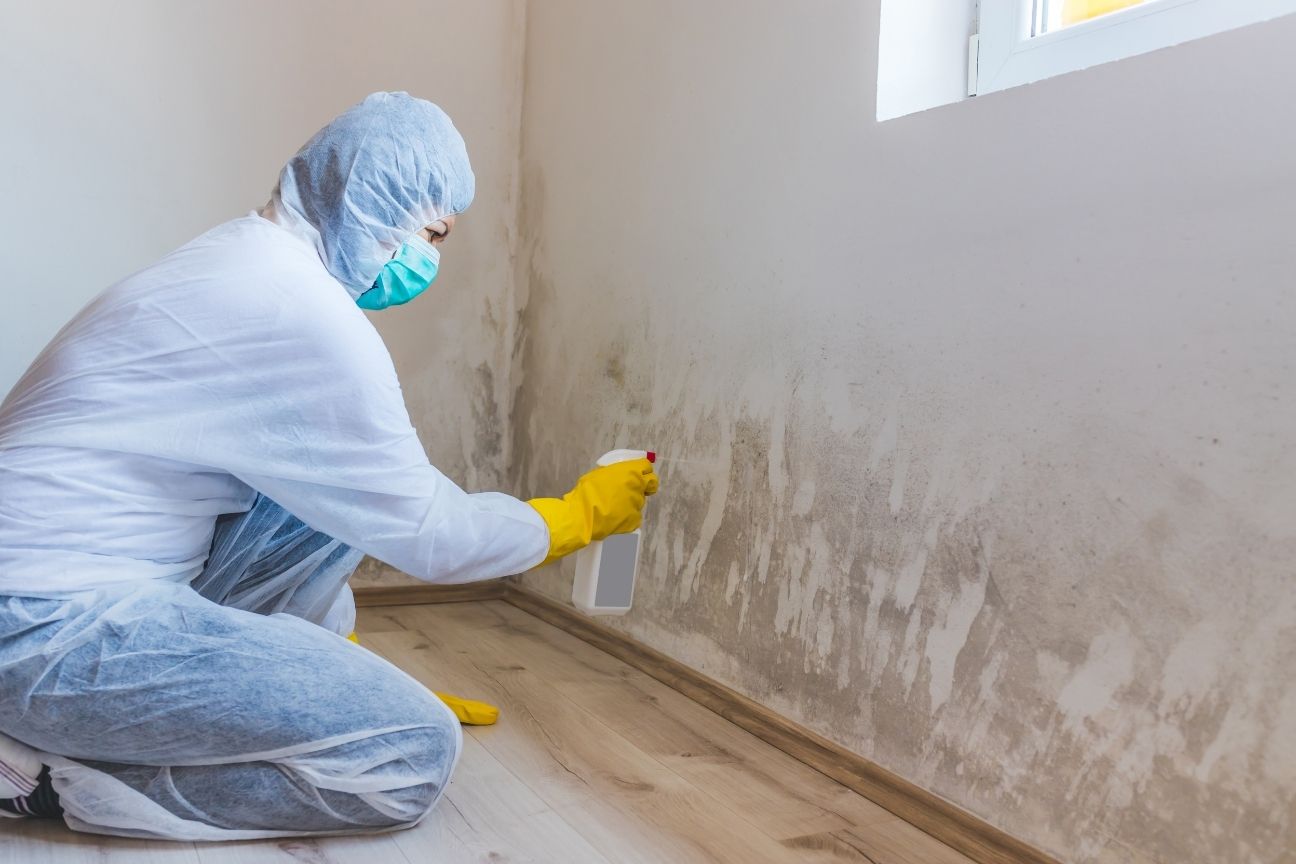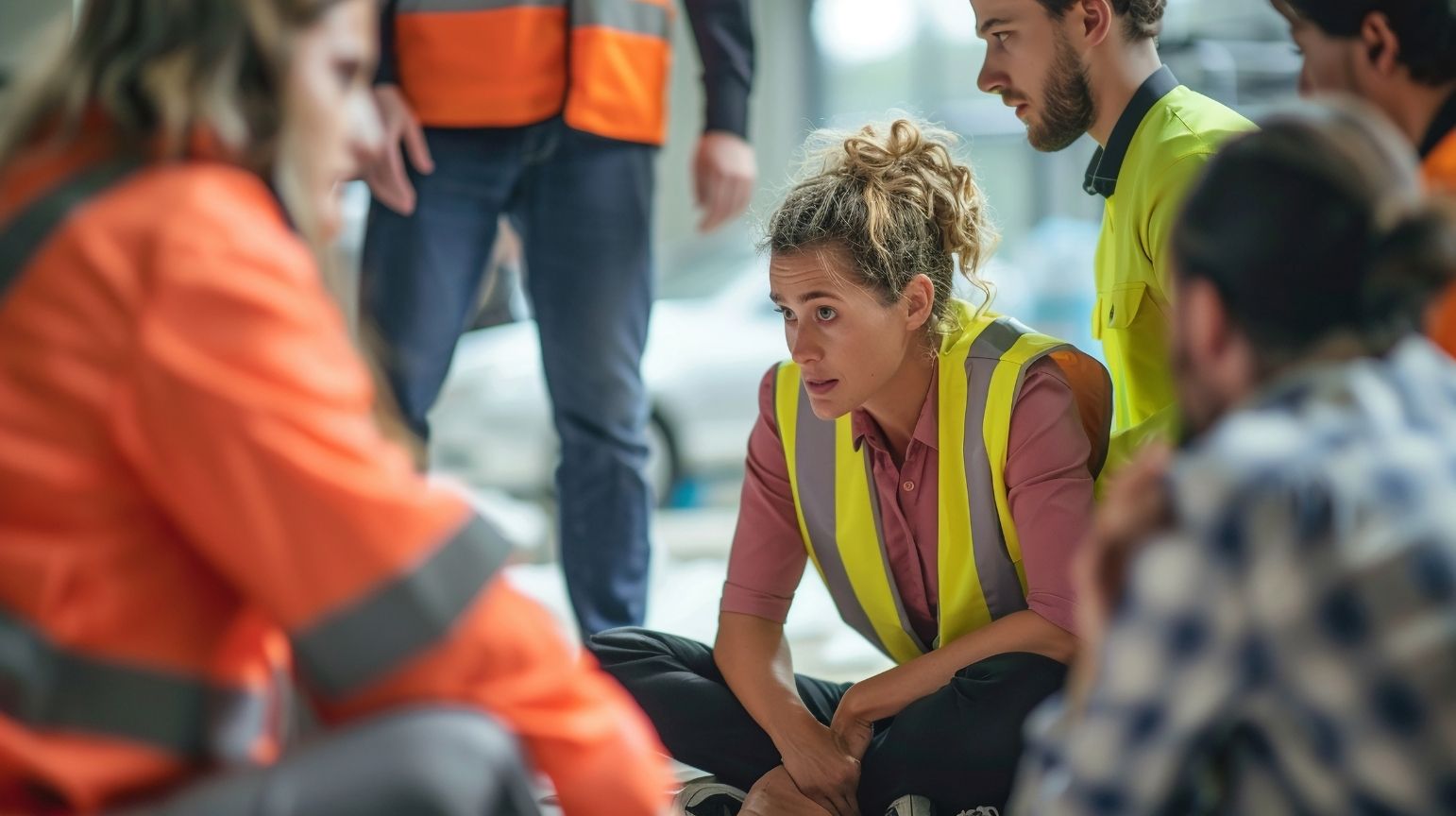Brownfield sites present unique challenges and opportunities. While they often harbor contaminants that can hinder development, effective remediation can transform these spaces into valuable assets for communities. Here, we’ll explore 10 key steps for effective brownfield remediation—a roadmap to ensure every project is handled with care, expertise, and efficiency.
Introduction
Brownfields are previously developed lands that may be contaminated by hazardous substances. These sites often lie abandoned, casting a shadow over potential development. However, with an estimated 450,000 brownfields in the United States alone, they represent significant opportunities for revitalization. By effectively managing these sites, communities can transform them into safe, functional spaces.
Importance of Brownfield Remediation
Effective brownfield remediation matters for several reasons:
Health Risk Elimination
- Cleaning up hazardous materials minimizes exposure to toxins.
- Ensures the safety of local residents.
Economic Growth
- Successful remediation can attract new businesses.
- Creates jobs and enhances property values.
Environmental Improvement
- Remediation efforts restore ecosystems.
- Improve air and water quality, and provide green spaces.
This results in not only a safer environment but also a better quality of life for residents.
Purpose of This Article
In this article, we’ll outline the 10 key steps for effective brownfield remediation. Each step will guide you through the process, highlighting the importance of each phase. By the end, you’ll have a clearer understanding of how to approach the challenges and opportunities of brownfield sites.
Goals of Brownfield Redevelopment
With the right strategies, these neglected areas can become valuable assets, fostering growth and sustainability for communities. Let’s dive into the steps needed for successful remediation.
Step 1: Initial Assessment
The journey of brownfield remediation begins with a solid understanding of the site. An initial assessment is crucial. This step gathers historical data and defines the land’s past use. It’s about connecting the dots between what once was and what could be.
Why Conduct a Preliminary Site Assessment?
A preliminary site assessment helps in identifying potential contaminants. Knowing what you’re dealing with upfront can save time and resources later in the project. This assessment typically involves a review of previous land uses, existing buildings, and any known environmental issues. For instance, if the site was once home to a manufacturing facility, it might be contaminated with heavy metals or solvents.
Gathering Historical Data
Next, collect historical data. You can obtain information from local archives, environmental agencies, and interviews with long-time residents. Look for records of spills or accidents that could have led to contamination. Even old maps can provide hints about pollutants, especially old industrial or landfill sites.
Types of Contaminants to Identify
After gathering background information, it’s essential to categorize potential contaminants. Key types include:
- Heavy metals: Lead, arsenic, and mercury can persist in the environment.
- Volatile organic compounds (VOCs): Common in industrial areas or near gas stations.
- Pesticides and herbicides: Often found in agricultural zones.
Identifying contaminant types and sources allows for more efficient planning of your remediation strategy.
Conclusion of the Initial Assessment Phase
In summary, the initial assessment lays the groundwork for successful remediation. By understanding the site and its challenges from the start, you position the project for success. This proactive approach not only fosters informed decision-making but also strengthens community trust, an essential element for long-term sustainability.
Moving forward, every remediation project can benefit from this careful and systematic approach.
Step 2: Stakeholder Engagement
Engaging stakeholders is crucial in brownfield remediation. It helps build trust and ensures that projects meet community needs. Failing to involve local residents and businesses can lead to misunderstandings and resistance.
Importance of Involvement
Community input shapes the success of remediation efforts. Local residents often have valuable insights about the site’s history and concerns regarding contamination. Their involvement can enhance the project’s credibility and success. It’s not just about fixing the land; it’s about revitalizing a community.
How to Communicate Effectively
Effective communication is key to successful engagement. Here are a few strategies to consider:
Host Public Meetings: Organize sessions to discuss project goals, timelines, and potential impacts. Ensure everyone feels welcome to voice opinions.
Create Informative Materials: Distribute flyers, newsletters, or a dedicated website. Use clear and straightforward language to explain the remediation process and its significance.
Utilize Social Media: Harness social media platforms to share updates and solicit feedback. Virtual engagement can reach a wider audience and make it easier for people to connect.
Establish a Feedback Loop: Create channels for ongoing dialogue. Surveys, suggestion boxes, or dedicated hotlines help gather community feedback continuously.
- Be Transparent: Share findings from assessments and investigations openly. When people understand the issues at stake, they are more likely to support remediation efforts.
By actively involving stakeholders, brownfield projects can gain greater public acceptance and ensure that the remediation process aligns with community priorities. A well-informed and engaged community can be a project’s greatest ally. Engaging effectively not only fosters trust but also helps create a sustainable path toward redevelopment.
Step 3: Detailed Site Investigation
A thorough site investigation is crucial for successful brownfield remediation. This step focuses on gathering precise data about the extent of contamination. You need to know what you’re dealing with before you can clean it up.
Conducting Site Investigations
Start by collecting soil, groundwater, and air samples. Each sample should undergo rigorous laboratory analysis. Testing methods such as direct push technology and soil gas surveys help determine contaminant levels. This data gives you insight into the types of pollutants present.
Understanding the Extent of Contamination
Once you’ve gathered samples, analyze the data to assess the contamination spread. Determine how deep the pollutants penetrate the soil and how far they extend horizontally. Use geophysical surveys and mapping tools to visualize contamination patterns. Understanding these factors will inform your remediation strategy.
Identifying Potential Risks
It’s also important to evaluate the potential risks the contaminants pose to human health and the environment. Knowing how substances might migrate helps you identify vulnerable areas. An effective site investigation outlines exposure pathways, such as groundwater or soil contact.
Compliance with Regulatory Standards
During this phase, ensure compliance with regulatory frameworks. Different contaminants have specific guidelines that dictate how to handle them. Familiarize yourself with these standards, as they will shape your remediation plan. Documenting adherence strengthens your project’s credibility and ensures legal compliance.
Engaging with Experts
Consider engaging environmental consultants who specialize in site investigations. Their expertise can enhance your findings. Plus, they can help interpret complex data and develop effective remediation strategies based on solid evidence.
Step 4: Develop a Remediation Plan
Creating a solid remediation plan is a pivotal step in the brownfield remediation process. This plan serves as your roadmap, guiding the entire project from start to finish. Let’s break down how to effectively develop this essential plan.
First, take a careful look at the data collected from your initial assessments and site investigations. This information is your foundation. It informs all subsequent decisions, from which contaminants are present to their concentrations. Understanding these details is crucial for crafting a targeted remediation strategy.
Next, involve your team in brainstorming potential remediation methods. It’s beneficial to gather input from experts, stakeholders, and community members. Each group brings unique insights that can enhance your plan. They might highlight practical considerations or express concerns that need addressing.
Compliance with regulatory guidelines should always be a top priority. Familiarize yourself with local, state, and federal regulations related to brownfield remediation. This understanding ensures that your plan aligns with legal requirements and avoids potential setbacks. Non-compliance can lead to project delays and increased costs.
Moreover, outline specific goals for the remediation project. Define what success looks like: Is it achieving a certain contamination level? Is it making the site suitable for a particular use? Establishing measurable objectives will help keep your project on track and provide clarity for all involved.
Finally, detail the necessary timelines and resource allocations. Identify the key milestones and allocate responsibilities among team members. A clear timeline with defined roles enhances accountability and streamlines communication.
In summary, a well-structured remediation plan is essential for successful brownfield projects. By grounding your plan in thorough research, regulatory compliance, and community engagement, you lay the groundwork for a project that not only meets legal standards but also benefits the community. Preparing your plan thoughtfully can lead to transformative results and a healthier environment for all.
Step 5: Selecting Appropriate Remediation Technologies
Choosing the right remediation technology is a critical step in the brownfield remediation process. It directly impacts the project’s effectiveness, timeline, and budget. Here’s how to approach this selection wisely.
Overview of Remediation Technologies
Many technologies exist for cleaning contaminated sites. Each has its strengths and weaknesses. Common options include:
Bioremediation: This technique uses living organisms to break down pollutants. It’s effective for many organic contaminants and is often cost-effective.
Soil Washing: This process involves using water and additives to wash away contaminants from soil. It’s particularly useful for heavy metals and other particulate-based toxins.
Thermal Desorption: This method heats soils to volatilize contaminants. It works well for volatile organic compounds (VOCs) but can be more expensive.
- Chemical Oxidation: This involves injecting oxidizing agents to neutralize harmful substances. This approach is suitable for a wide range of organics and can be quick.
Understanding these technologies helps in making an informed choice.
Result Analysis and Selection Criteria
When evaluating these options, consider the following criteria:
Contaminant Type: Different technologies target specific contaminants. Identify what you’re dealing with before you decide.
Site Conditions: The site’s geology, hydrology, and existing infrastructure influence which technology will work best.
Cost: Budget plays a major role in technology selection. Compare the long-term benefits and potential savings of each method against the initial cost.
Timeframe: Some technologies operate faster than others. Clearly define project timelines to match your remediation method.
Regulatory Compliance: Ensure that the chosen method meets federal and state regulations. Compliance isn’t optional and significantly influences technology selection.
Community Impact: Engage with stakeholders to understand community concerns. Some technologies might raise environmental or health questions.
Step 6: Implementation of Remediation
Executing the remediation plan is a critical phase in brownfield site management. This step involves careful coordination and strict adherence to the project’s goals. Below are key strategies to ensure effective implementation.
Establishing a Project Team
First, assemble a skilled project team. This group should consist of:
- Environmental engineers
- Project managers
- Safety experts
Each member plays a vital role in executing the remediation plan effectively. Clear roles and responsibilities streamline communication and enhance efficiency.
Timelines and Milestones
Developing a project timeline is essential. Break down the remediation process into manageable milestones. This approach allows you to:
- Track progress
- Identify delays early
Regularly reviewing these milestones keeps the project on course. Adjust timelines as needed to accommodate unexpected factors.
Resource Allocation
Next, ensure all resources are adequately allocated. This includes:
- Personnel
- Equipment
- Financing
Adequate resources help prevent project bottlenecks. Monitor usage to stay within budget and avoid overspending. Regular resource assessments can optimize efficiency.
Health and Safety Protocols
Implementing strict health and safety protocols is critical during this phase. Remediation work often involves hazardous materials, making it essential to prioritize safety. Consider the following:
- Conduct regular training sessions
- Hold safety briefings
These steps will help minimize risks to workers and the local community.
Quality Control Measures
Incorporate robust quality control measures throughout the process. Continuous testing during remediation assesses the effectiveness of your chosen technologies. Always be prepared to:
- Adjust your approach based on test results
- Ensure compliance with environmental regulations
This focus on quality safeguards the project’s success.
Communication with Stakeholders
Throughout the implementation phase, maintain open communication with stakeholders. Keep them updated on:
- Progress
- Unexpected challenges
Transparency builds trust and keeps the community engaged in the remediation process. Schedule regular updates and feedback sessions to foster collaboration.
Final Thoughts on Implementation
Successful implementation relies not only on planning but also on flexibility and adaptability. Stay prepared to tackle unforeseen challenges. Each decision you make in this phase shapes the future of the brownfield site and its potential for revitalization. By focusing on these aspects, you ensure a smooth transition toward remediation and, ultimately, restoration.
Step 7: Monitoring and Maintenance
Monitoring and maintenance are crucial after remediation. They ensure that the site remains safe and that the remediation efforts are effective over time.
First, establish a monitoring plan. This plan should include regular site inspections and environmental testing. Collect samples from soil and groundwater to check for residual contaminants. Use reliable test methods to ensure accurate results. Frequent testing can help identify any issues early, allowing for prompt corrective actions if needed.
After remediation, a maintenance strategy is also necessary. This involves managing the site to prevent future contamination. Regular maintenance checks help in keeping the area safe, especially if the site is redeveloped. Make sure to maintain infrastructure, like drainage systems, to avoid water pooling, which can lead to contamination issues.
Engage local stakeholders in this process. Their insights can be valuable for monitoring site conditions. Transparency with residents fosters trust and increases community involvement. Organize community meetings to discuss monitoring results, making the process collaborative and open.
In summary, effective monitoring and maintenance help safeguard public health. They ensure that the benefits of remediation are long-lasting. This critical step will help transform brownfields into safe, productive spaces for communities. Keeping a close eye on the site means less risk and more opportunities for development.
Step 8: Site Restoration and Redevelopment
After successful remediation, the next crucial phase is site restoration and redevelopment. This is where your hard work pays off. Transforming a cleaned-up brownfield into a functional space can breathe new life into a community.
Planning for New Uses
First, consider how the site can serve its community. Will it become a park, housing, or commercial space? Engage with local stakeholders to identify community needs. Their input is invaluable, helping ensure the site meets real demands.
Environmental Clean-Ups
Focus on environmental clean-ups during this phase. Removing any remaining contaminants is vital to ensure safety. Follow all regulatory guidelines meticulously. This step reaffirms your commitment to environmental stewardship.
Sustainable Practices
Adopt sustainable practices throughout restoration. Incorporate green building standards wherever possible. Use recycled materials and consider renewable energy sources. This approach not only enhances the site but ensures it benefits the environment long-term.
Long-Term Site Management
Successful redevelopment also includes planning for long-term site management. Develop strategies for ongoing maintenance and monitoring. This aspect is key to sustaining the health of the site and the surrounding community.
Community Engagement Post-Restoration
Finally, keep engaging with the community even after restoration. Share updates on the site’s progress and celebrate milestones together. This keeps the community invested in the project and fosters a sense of ownership.
Transforming a brownfield site into a revitalized space is a rewarding journey. With effective planning and execution, these areas can become vibrant parts of the community, enriching lives for years to come.
Step 9: Community Relations
Maintaining positive community relations is crucial during brownfield remediation. Communities often have strong sentiments about local projects. Thus, engaging with them can build trust and support. When stakeholders feel involved, the process becomes smoother and more collaborative.
Keep Communication Open
Start by informing the community about your project’s goals and timelines. Use newsletters, social media, and local meetings to share updates. Transparency prevents misinformation and fosters goodwill. Make it clear that their opinions matter. Solicit feedback through surveys or public forums. This two-way communication can lead to useful insights.
Address Community Concerns
Be prepared to listen and address any concerns. Complaints about noise, dust, or traffic are common. As a project manager, acknowledge these worries. Offer clear, actionable solutions. For instance, implement noise reduction measures during construction. This shows commitment to community well-being.
Celebrate Progress
Celebrate milestones to keep the community engaged. Host events or open houses to showcase the project’s positive impacts. Highlight benefits like improved green spaces, economic opportunities, or enhanced safety. Sharing success stories creates a sense of ownership among residents.
Collaborate with Local Organizations
Partnering with local organizations can strengthen community relations. These groups often have established trust and knowledge about community needs. Collaborate on initiatives that address local issues, such as workforce training or environmental education programs. This not only enriches the project but also aligns it with community values.
Plan for Long-Term Engagement
Community relations should not end once the remediation is complete. Plan for ongoing engagement by providing updates about the site’s redevelopment. Continue to involve stakeholders in decisions about future uses. This sustained connection can help prevent resistance for future projects.
By prioritizing community relations, you enhance your brownfield remediation project’s overall success. Involving residents in meaningful ways leads to more effective outcomes and a resilient community built on trust.
Step 10: Review and Reporting
Review and reporting are the final steps in brownfield remediation, yet they are often overlooked. Documenting the entire remediation process ensures that you have a comprehensive record. This not only aids in transparency but also builds trust with stakeholders.
Importance of Documentation
Effective documentation captures everything from initial assessments to remediation outcomes. This record provides a clear narrative of what occurred during the project. You’ll want to include all methodologies, data analyses, and any changes made to the original plan. By outlining each aspect, you create a reliable resource for future reference.
Transparency is crucial. Share your findings with local stakeholders and regulatory bodies. They will appreciate the clarity and thoroughness of your reporting. In addition, having a transparent report can help address any concerns that may arise after the project is completed.
Reporting Results
Once you’ve gathered all documentation, it’s time to present your results. Create a formal report that summarizes your findings. Highlight key outcomes and any residual contamination levels remaining after remediation. Use clear visuals, such as charts and graphs, to illustrate your data effectively.
Also, consider hosting a community meeting to discuss your results. This provides an opportunity for questions and feedback. Engaging with the community fosters a sense of ownership and support for the project.
Continuous Improvement
Finally, use your review process for continuous improvement. Reflect on what worked and what didn’t. Identify areas for future projects to enhance your remediation strategies. This commitment to learning not only benefits your team but also reinforces your reputation in the community and the industry.
In summary, thorough review and reporting is not just a formality. It’s an essential part of ensuring transparency and fostering community trust. Emphasizing these aspects leads to better relationships with stakeholders and improves the overall effectiveness of future remediation efforts.
Conclusion
In summary, effective brownfield remediation is essential for revitalizing contaminated sites. Each step in this process, from initial assessment to final reporting, plays a critical role in success. A well-executed plan can turn a liability into a community asset.
Prioritizing stakeholder engagement fosters trust and collaboration. This is especially vital when addressing community concerns. Remaining transparent during the remediation process encourages positive relationships among all parties involved.
As you consider your next brownfield project, remember the importance of a detailed site investigation. Understanding the extent of contamination helps tailor the remediation plan effectively. Selecting appropriate technologies can significantly impact the success of the cleanup.
Monitoring and maintenance should not be overlooked. Long-term vigilance ensures that the site remains safe and beneficial to the community. Finally, consistently reviewing and reporting helps maintain accountability. It also allows for adaptations to enhance overall effectiveness.
Investing in brownfield remediation not only enhances community spaces but also promotes environmental stewardship. By following these ten key steps, you contribute to a cleaner, greener future. Let’s work together to transform brownfields into thriving areas for everyone.







